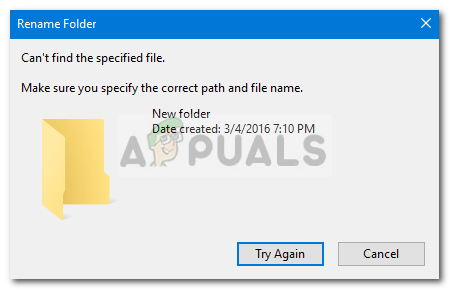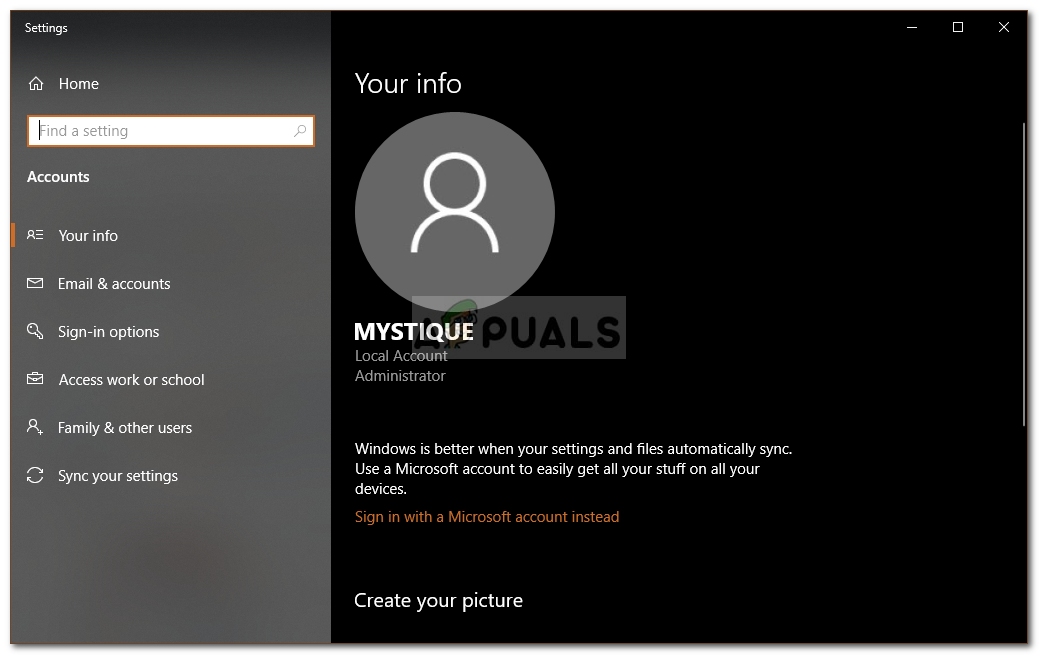Fix: Can’t Rename Folder on Windows
There have been reports that users are not able to rename the folders on their Windows 10. According to the reports, the issue was set into motion by a fresh installation of Windows 10 or, in some cases, its updates. When users try to rename the folders on their system, they are prompted with either ‘The file or folder does not exist’ or ‘Can’t find the specified file. Make sure you specify the correct path and file name’ error.
Issues as such don’t sound so problematic at the start, however, later down the road, they can turn out to be a real ordeal. Nonetheless, the issue has its share of workarounds. For some users, renaming the folder via the Properties of the folder worked, however, that’s not a permanent workaround as, in some scenarios, it can revert back to ‘New Folder’ or any other name. Therefore, we are here to help you isolate the issue permanently.

What causes the inability to rename folders on Windows 10?
Well, the error is not generic and does not happen that often, however, whenever you encounter it, it can be due to the following factors —
- Windows update. According to the reports, the issue was born after the users updated their system or freshly installed Windows.
- Windows Theme. In some cases, the issue can be due to the theme that your system is currently using in which case you will have to change it.
- Missing registry entries. If your Windows Registry is missing certain entries or folder protocol association is changed, the error might occur because of that.
To get your issue resolved, we have mentioned the most effective solutions down below. Please try to follow them in the same order as provided.
Solution 1: Log in as an Administrator
The first step towards fixing the issue would be to check if the user account that you are currently using has administrative privileges or not. This issue mostly occurs when you have created multiple accounts on your system. Therefore, before you try to apply the solutions down below, make sure that you are logged in as an administrator. If you have only one account on your system, jump to the next solution. To check your account type, follow the given instructions:
- Press Windows Key + I to open Settings.
- Type in ‘Account‘ in the search box and select ‘Manage your account‘.
- A new window will show your account info.

User Account Info
Solution 2: Change Windows Theme
Changing the current theme of your system has seemed to work for most of the users. Therefore, this is what you should try after making sure you are using an administrator account. If the current theme is set to Windows, you will have to change it from the settings to Windows 10. This will most likely solve your issue. Here’s how to do that:
- Press Windows Key + I to open Settings.
- Go to Personalization.
- Switch to the Themes panel.
- Change your theme to Windows 10 by clicking Windows 10 under ‘Apply a theme’.

Changing Theme - Restart your system and then check if this fixes your issue.
Solution 3: Modify Windows Registry
The issue can also occur if your Windows Registry is missing certain entries or if the Folder Protocol Association is trifled with. In such a case, you will have to make sure the entries are correct, or simply, you will have to restore the defaults. The registry entries for folders are stored at this path:
HKEY_LOCAL_MACHINE\SOFTWARE\Microsoft\Windows\CurrentVersion\Explorer\FolderDescriptions

Since the list is too large, finding or checking certain entries can be a tiresome task. Therefore, to make it easy, you can use a ‘.reg’ file which will restore the defaults once you run it.
You can download the file from here. Once you have downloaded the file, just simply run it as an administrator and wait. Once it is done, restart your system and try to rename a folder.





